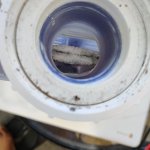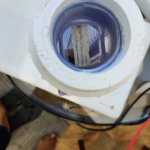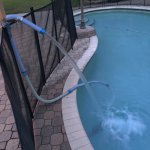Your high TA is a problem and causing the scaling in your cell.
What is the pH and TA of your fill water?

www.troublefreepool.com
Why Should TA be Lowered with a SWG?
Usually a TA on the high end is fine if the pH is stable. However TA does need to be adjusted down with an SWG. The problem is, INSIDE the cell, the
CSI is very different than in bulk pool water.
With high TA and aeration from the bubbles the SWG creates, you'll get faster pH rise inside the cell and so there's more potential for scaling. With current reversal, the cell tends to stay clean but you'll get more snowflakes out of the returns. Calcium hardness is only one part of the equation.
If the SWG cell pH rises much above 10 (and it can easily do that) and if there is sufficient levels of carbonate ions available (CO3--), then you will get calcium carbonate precipitation. The higher the TA and pH, the more carbonate anions are available.
Borates are particularly helpful preventing scale in a SWG because the pKa for boric acid / borate anion buffering is approximately 9. That essentially means you get the maximum buffering capacity at a pH of 9 and that tends to hold down the pH rise inside the cell. Keeping the pH below 10 in the SWG cell reduces the risk of calcium and magnesium scaling (insoluble magnesium hydroxide precipitates at a pH of 10.2 or so).
A lower Total Alkalinity level can help a pool owner stabalize their pH increase. We'll explain how to lower TA with a little help from muriatic acid.

www.troublefreepool.com





